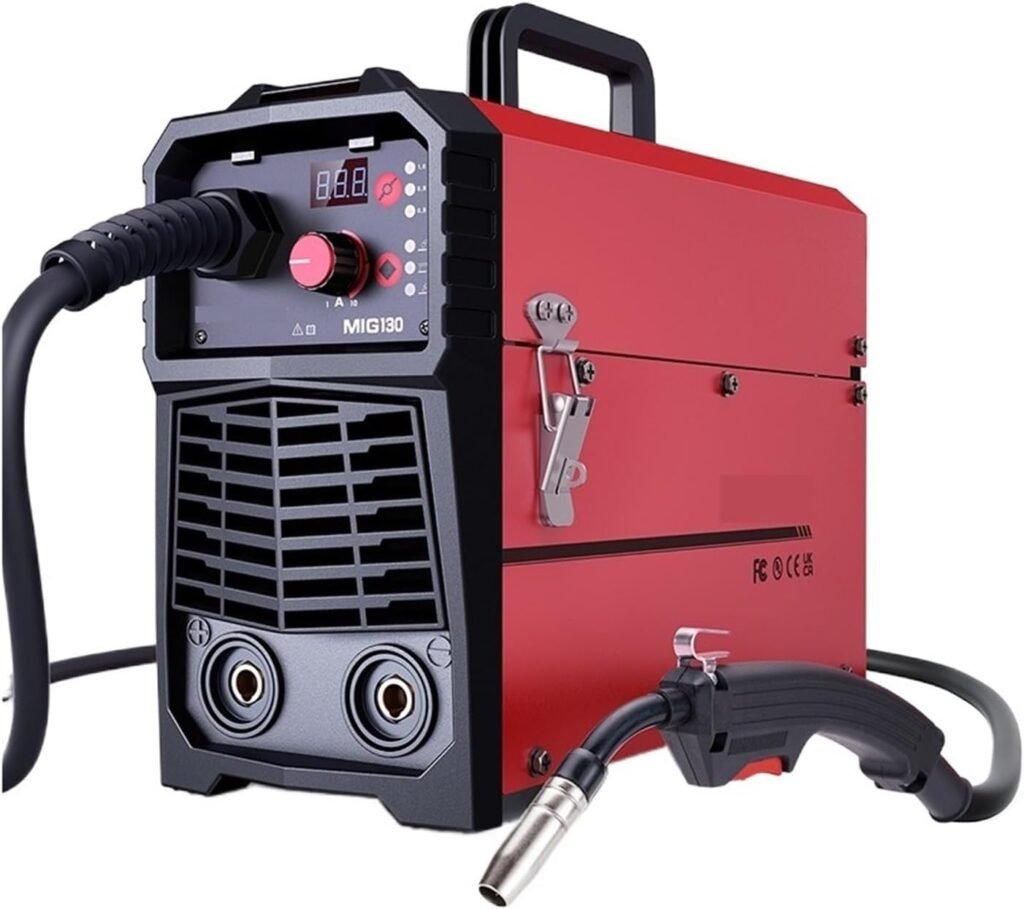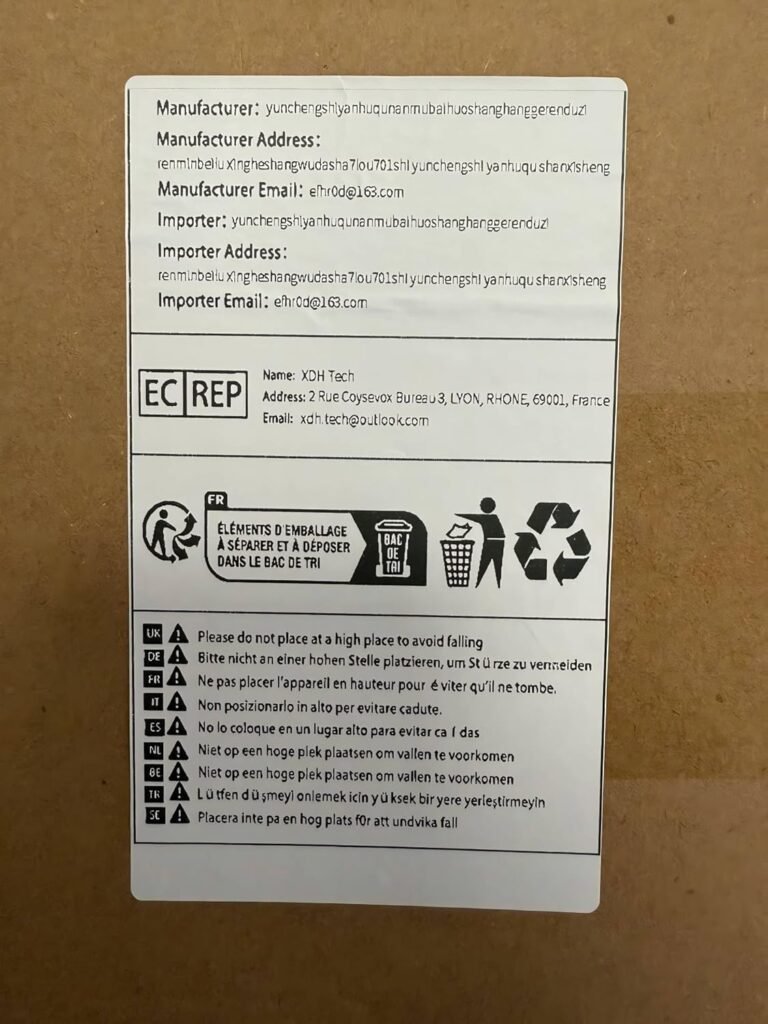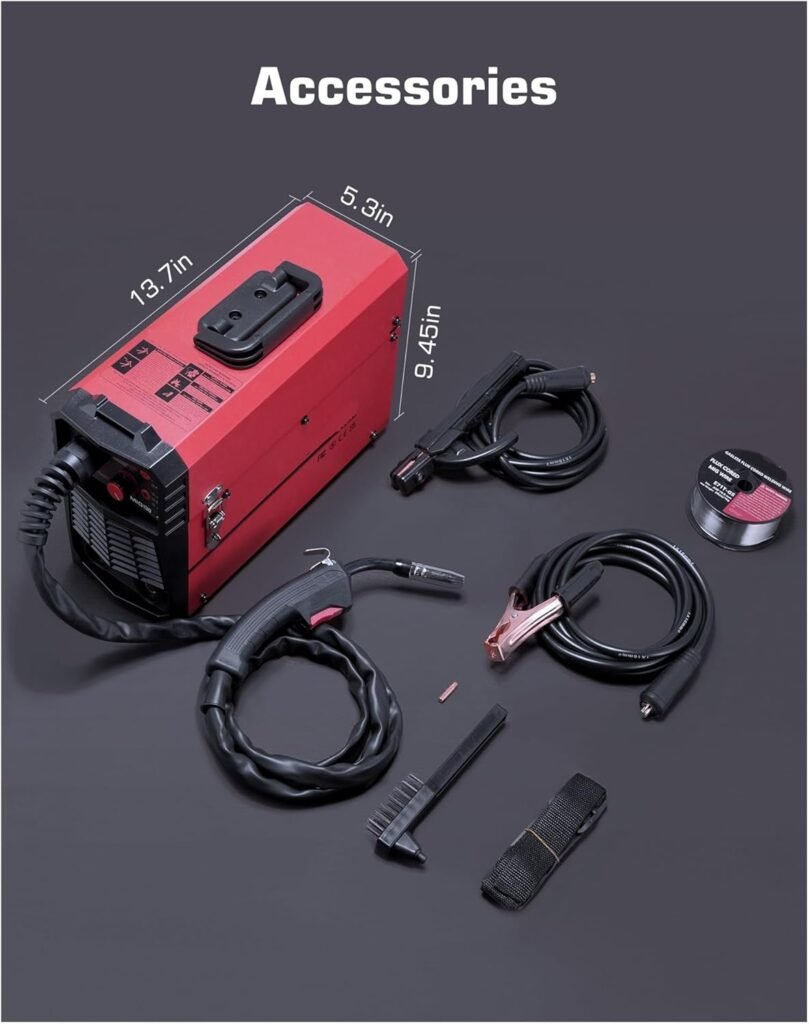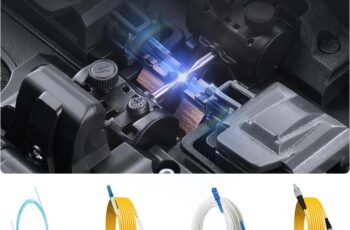Ad Blocker Detected
Our website is made possible by displaying online advertisements to our visitors. Please consider supporting us by disabling your ad blocker.
Looking for a compact multi-process welder that can handle home projects and outdoor repairs?
Overview of the “Portable Welding Machine Digital Contol Welder Gas-Less 3 In 1 MIG MMA LIFT TIG For Household Welding”
You’ll find this unit positioned as a versatile solution for hobbyists, DIYers, and light professional tasks. It combines MIG (flux-cored gasless), MMA (stick), and LIFT TIG capabilities in a portable package so you can tackle a broad range of metal-joining jobs without needing multiple machines.
What the product promises
The manufacturer emphasizes adjustable current control and a 10-speed variable wire feed to help you get cleaner, more controlled welds on carbon steel, stainless steel, and thicker metals. Built-in protections—over-current, overload, overheating, and over-voltage—are meant to extend the machine’s lifespan and give you safer operation in varied environments.
Who this is for
If you work on home DIY projects, outdoor repairs, farm equipment, or maintenance tasks, this welder is made to be a compact, mobile tool you can take on-site or use in the garage. You’ll especially appreciate gas-less MIG for outdoor or windy conditions and the inclusion of TIG and MMA for more technique-specific work.
Key features and benefits
You’ll want to know the main features and how they translate to real-world use. This machine’s key selling points are its three-process capability, variable feed, current adjustment, safety protections, and portability.
Three-in-one capability (MIG, MMA, LIFT TIG)
Having three processes in one machine gives you flexibility. You can use flux-cored MIG for quick, efficient joints, MMA (stick) for rusty or dirty surfaces and outdoor tasks, and LIFT TIG when you need a cleaner, more precise weld on thinner materials.
10-speed variable feed and current adjustment
The 10-speed feed control paired with adjustable current lets you fine-tune wire feed rate and heat input. That combination helps reduce spatter and burn-through when you’re welding sheet metal, while allowing you to push more power for thicker pieces.
Built-in protective features
The over-current, overload, overheating, and over-voltage protections work together to protect both you and the machine. Those protections will automatically shut down or limit operation under dangerous conditions, improving longevity and reducing the chance of catastrophic failure.
Portability and carry options
You’ll find both a handle and shoulder strap that let you move the welder easily. Its compact size means you can carry it to remote repair sites, to the farm, or take it with you when space is tight.
Quick specification breakdown
Below is a table to help you quickly understand the machine’s core characteristics and how they affect your work.
| Feature | Description | Practical implication for you |
|---|---|---|
| Welding processes | MIG (flux-cored, gas-less), MMA (stick), LIFT TIG | Versatility for different materials and conditions — you can switch processes based on the job without buying separate machines |
| Wire feed | 10-speed variable feed | Precise control over wire feed rate, reduces spatter and improves bead consistency |
| Current control | Adjustable current | Ability to match heat to material thickness for better weld penetration and reduced burn-through |
| Protection systems | Over-current, overload, overheating, over-voltage | Safer operation and extended machine life; less risk of damage from improper use or unstable power |
| Portability | Handle and shoulder strap, compact design | Easy to transport to different job sites or around the yard/garage |
| Suitable materials | Carbon steel, stainless steel, thicker steel | Works for most common welding projects around the house, farm, or maintenance tasks |
| Typical uses | Home DIY, outdoor repairs, rusty metal repairs, farm/road equipment maintenance | A practical multi-purpose option for hobbyists and light tradespeople |
Design and build quality
The machine’s physical design matters when you’ll be carrying it and using it in less-than-ideal conditions. You’ll want robust construction, secure knobs and switches, and a compact footprint.
Housing and portability
The housing is compact and designed to be carried by handle or shoulder strap, which makes it convenient to move. You’ll appreciate the lighter weight when you’re transporting it between jobs or carrying it up ladders or into cramped spaces.
Controls and usability
Controls are digital and analog in combination, giving you both precise readouts and tactile knobs. The 10-speed feed and current controls are intuitive, letting you make quick adjustments on the fly rather than stopping to re-calibrate.
Build durability
The unit is designed with protections and components aimed at lasting through tough conditions. While it won’t replace heavy industrial welders, you’ll find it rugged enough for regular DIY and maintenance tasks.
Performance: real-world welding results
Performance will depend on your skill, electrode/wire selection, and setup. Still, you can expect competent results across all three processes with reasonable practice.
MIG (flux-cored gas-less) performance
Flux-cored, gas-less MIG is excellent for outdoor or windy conditions because you avoid the need for shielding gas. With the 10-speed feed, you can dial in a smooth bead on medium-thickness sheet and structural steels. Expect a bit more spatter than gas-shielded MIG, but you’ll gain mobility and convenience.
MMA (stick) performance
MMA is forgiving on rusty or painted surfaces, which makes it ideal for repair work. The current control helps with different electrode sizes; thicker sticks require more current, and the machine’s protections will help you avoid overheating when you push longer welds.
LIFT TIG performance
LIFT TIG lets you make cleaner, more precise welds on thinner materials or when appearance matters. While it won’t reach the finesse of high-end TIG machines with high-frequency start and pulse capabilities, it’s a useful addition for finishing and welding stainless or thin carbon steels when you need a neat bead.
Setup and first use
Getting started correctly matters for safety and good welds. You’ll find the setup straightforward if you follow a few key steps.
Unboxing and inspection
When you open the package, check for any shipping damage and confirm that accessories like the welding lead, ground clamp, torch, shoulder strap, and instruction manual are present. You’ll want to confirm all fasteners and plugs are secure before powering on.
Electrical hookup and safety
Make sure you connect to a suitable power supply recommended by the manual. Use a properly grounded outlet and avoid makeshift extension cords; heavy-gauge extension cords cause voltage drops that reduce welding performance. You’ll also want to set the correct polarity and wire spool orientation for MIG operation.
Wire and electrode selection
Choose flux-cored wire sizes and stick electrodes appropriate to the metal thickness you’re welding. Thinner metals require smaller-diameter wire and lower current; conversely, thicker material requires larger wire and more amperage. The manual will give recommended wire sizes and settings to help you find the sweet spot quickly.
Practical tips for better welds
You’ll improve results faster if you use a consistent technique and settings approach. Here are practical tips that will make your learning curve shorter.
Start with scrap
Before you touch your project, practice on scrap metal that matches your workpiece thickness. That helps you tune current and wire feed without risking parts.
Adjust in small increments
When adjusting feed speed or current, change one parameter at a time and test. Small changes are easier to interpret than big jumps, which can mask which adjustment improved the bead.
Maintain consistent travel speed and angle
Consistent travel speed and torch angle produce better penetration and bead appearance. Keep a steady pace and hold the torch at a consistent angle to avoid undercut or excessive convexity.
Clean and prep surfaces
Even though MMA can handle rust and grime better than other processes, cleaning the joint area will still improve weld quality. Remove flaking rust, heavy paint, and scale as much as practical.
Safety considerations
You’ll be safer if you follow standard welding safety practices. Built-in protections help, but personal protective equipment and site safety are vital.
Personal protective equipment (PPE)
Always wear a welding helmet with the appropriate shade, welding gloves, flame-resistant clothing, and safety glasses. A respirator or adequate ventilation is recommended if you’re working with coated metals or in confined spaces.
Fire prevention
Keep flammable materials away, use a fire-resistant mat or surface when possible, and have a fire extinguisher nearby. Sparks and hot slag can travel and ignite unseen materials.
Electrical safety
Ensure the unit is plugged into a properly grounded outlet and inspect cables for damage. Avoid using the machine in damp or wet conditions, and always disconnect power before performing maintenance.
Maintenance and care
Routine maintenance extends the life of your machine and keeps it operating safely. You’ll find maintenance straightforward if you follow a few steps.
Clean the exterior and vents
Dust and debris can accumulate in vents and around controls. Use compressed air or a brush to clean vents periodically to avoid overheating and to maintain the effectiveness of built-in protections.
Inspect consumables and connections
Check the torch cable, ground clamp, contact tips, and nozzles for wear. Replace consumables like contact tips and liners as they wear to preserve consistent wire feeding and arc stability.
Store properly
When not in use, store the machine in a dry, cool place and keep cables coiled and off the floor to prevent damage. Using the shoulder strap for transport helps protect connectors and controls.
Troubleshooting common issues
You’ll hit snags, especially when learning. Here are common problems and practical fixes.
Inconsistent wire feed or birdnests
If the wire tangles in the feed system, check the spool orientation, tension on the feed roller, and the condition of the liner. Replace worn liners or tips that cause drag on the wire.
Excessive spatter in MIG mode
Spatter is common with flux-cored wire, but you can reduce it by fine-tuning wire feed speed and current. Slowing feed or reducing current can help; also check contact tip distance and cleanliness.
Overheating shutdowns
If the welder shuts down due to overheating, allow it time to cool and clean the cooling vents. Avoid extended continuous welding at maximum output; intermittent welding and breaks will keep temperature in check.
Poor TIG starts
LIFT TIG requires good torch-to-work contact technique. Ensure your ground is secure and that your lift-start technique is consistent. Clean the tungsten and check for contamination.
Accessories and consumables you’ll need
To get the most from your machine, you’ll want a few accessories and replacement parts on hand.
Essential consumables
Have a stock of flux-cored wire in the diameters you use most, contact tips, nozzles, and replacement liners. For MMA, keep varied electrode sizes suited to the metals you weld.
Helpful accessories
A welding cart or stand makes onsite work easier, and an extra set of leads or a longer ground clamp can increase your workspace flexibility. Good quality PPE including a comfortable auto-darkening helmet will make long sessions easier on you.
Optional add-ons
If you move into more specialized TIG work, consider a foot pedal for more nuanced current control; however, this may not be compatible with the machine’s basic TIG capability and would require checking electronics and hookups.
Comparison with other types of welders
You’ll want to know how this machine stacks up against other options so you can decide if it’s the right fit.
Versus single-process MIG or TIG machines
Compared to dedicated MIG or TIG machines, this three-in-one unit gives greater versatility but may not match the specialized performance and control of higher-end single-process units. If you need precision TIG for thin stainless or aluminum, a dedicated TIG will outshine this multi-process model.
Versus heavy-duty industrial welders
Industrial welders offer higher duty cycles, greater amperage ranges, and advanced features for production work. This portable unit is aimed at hobbyists and maintenance — not full-time industrial welding.
Versus inverter-based welders
Many modern portable welders are inverter-based, giving good efficiency and lighter weight. This machine fits into that portable category but you’ll want to check if it uses inverter technology to confirm weight and performance claims.
Pros and cons
You’ll want a clear list of strengths and limitations so you can weigh purchase decisions.
Pros
- Multi-process versatility (MIG, MMA, LIFT TIG) for a variety of jobs.
- 10-speed wire feed and adjustable current for better control.
- Built-in protections to safeguard the machine.
- Portable design with handle and shoulder strap for easy transport.
- Gas-less MIG option is excellent for outdoor work and windy conditions.
Cons
- Gas-less MIG produces more spatter compared to gas-shielded MIG.
- Not a replacement for high-end dedicated TIG or heavy industrial welders.
- You may need to buy extra consumables and accessories to get optimal performance.
- Users who want advanced TIG features or pulse control may find it limiting.
Use-case scenarios and recommendations
Here are practical situations where the welder shines and where you might consider alternatives.
Ideal scenarios for you
- Emergency repairs on farm or road equipment where portability and gas-less operation are essential.
- Home DIY projects like building metal furniture, gates, or repairing garden tools.
- Outdoor welding where wind would spoil gas-shielded MIG results.
- Occasional TIG tasks where you need a cleaner finish without investing in a full TIG setup.
When to consider something else
- If you plan on high-production welding with long continuous runs, a higher-duty-cycle industrial welder will be more reliable.
- If you require professional-level TIG for thin stainless or aluminum with pulse and high-frequency start, a dedicated TIG unit is a better investment.
Buying advice and what to check before purchase
You’ll avoid surprises if you verify a few things before you buy.
Check included accessories
Confirm what comes in the box: torch, ground clamp, welding lead, shoulder strap, spare tips, and instruction manual. Missing consumables increase your first-use costs.
Confirm power requirements
Ensure your power outlet matches the machine’s needs. If the machine requires a single-phase 220V or a different voltage than you have available, you’ll need a proper power source or a different unit.
Warranty and support
Verify warranty terms and the availability of customer support and replacement parts. A good warranty and accessible parts supply will save you headaches down the line.
Frequently asked questions (FAQ)
You’ll likely have some common questions—here are clear answers to typical queries.
Can you weld aluminum with this machine?
Aluminum welding typically requires spool gun support or dedicated TIG equipment for best results. Gas-less flux-cored MIG is not ideal for aluminum, so this machine may not be the best choice for aluminum projects.
Is gas necessary for MIG?
This machine’s MIG function is flux-cored gas-less, meaning you don’t need external shielding gas. That’s great for outdoor work but expect more spatter than gas-shielded MIG.
Is it suitable for beginners?
Yes, it’s suitable for beginners with an understanding of basic welding safety and practice. The variable controls let you start conservatively while you learn the correct settings and techniques.
How heavy is it to carry?
Exact weight depends on model specifics, but the design emphasizes portability with a handle and shoulder strap. You should be able to carry it short distances without specialized equipment.
Final verdict
You’ll find this “Portable Welding Machine Digital Contol Welder Gas-Less 3 In 1 MIG MMA LIFT TIG For Household Welding” a compelling choice if you need a versatile, portable welder for home, farm, or maintenance tasks. It offers practical multi-process capability, adjustable controls, and built-in protections that make it a useful tool for a wide range of applications. While it doesn’t replace dedicated industrial or high-end TIG machines, it gives you an excellent balance of convenience, flexibility, and value for everyday welding needs.
Should you buy it?
If your priorities are portability, versatility, and the ability to perform outdoor or on-site repairs without a gas supply, this unit is worth strong consideration. If your work demands specialized TIG performance, high-duty industrial use, or frequent aluminum welding, you might be better off with a dedicated machine.
Final tips before you start
Make sure you stock up on appropriate flux-cored wire and electrodes, review the manual for recommended settings, and practice on scrap metal to get comfortable with feed and current adjustments. With proper setup and a bit of practice, you’ll get solid, useful results from this compact multi-process welder.
Disclosure: As an Amazon Associate, I earn from qualifying purchases.








